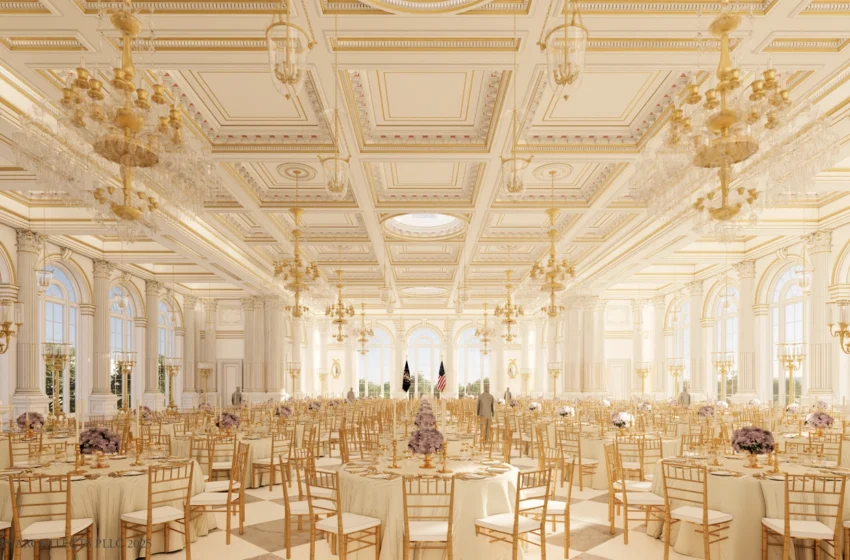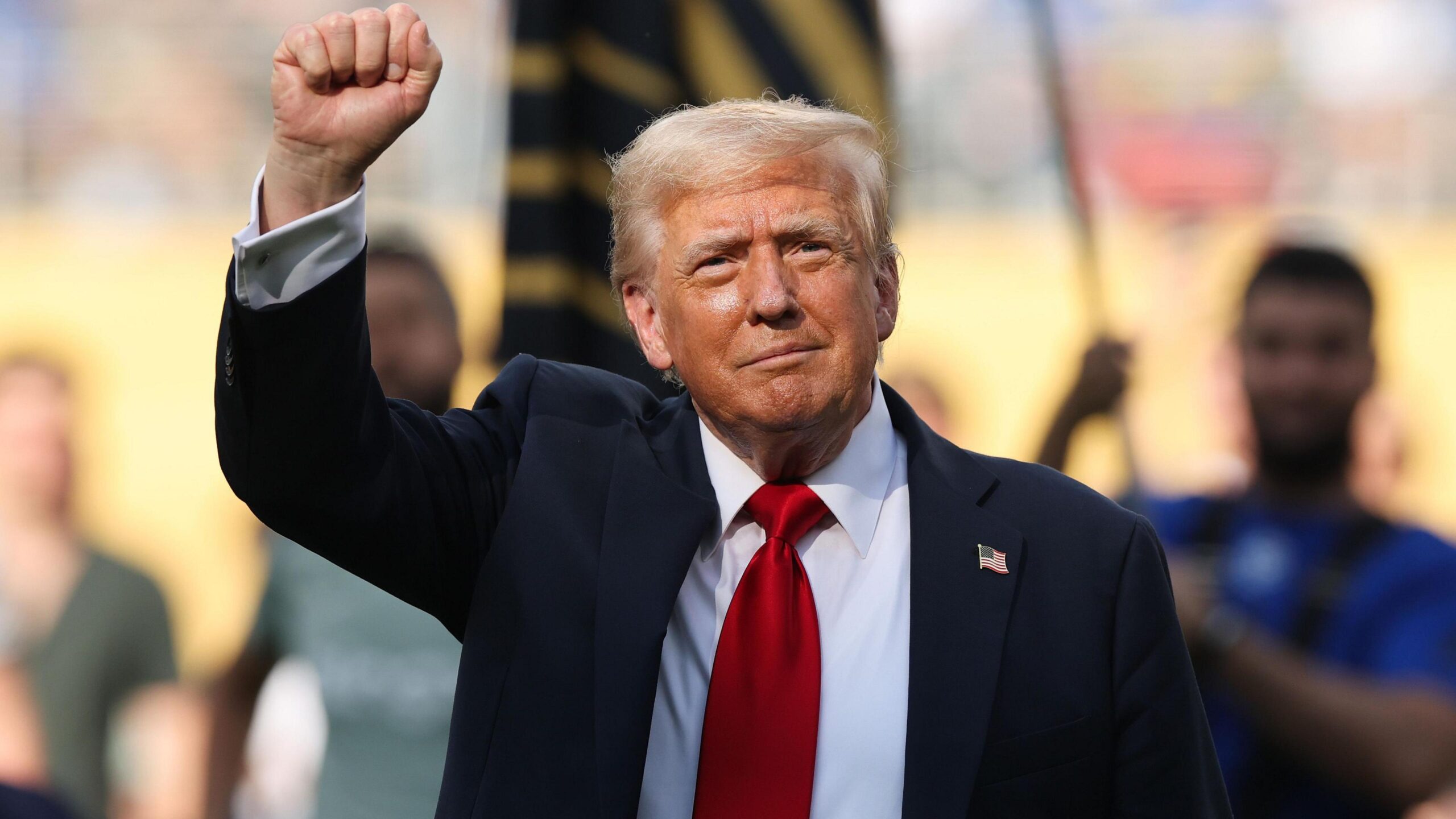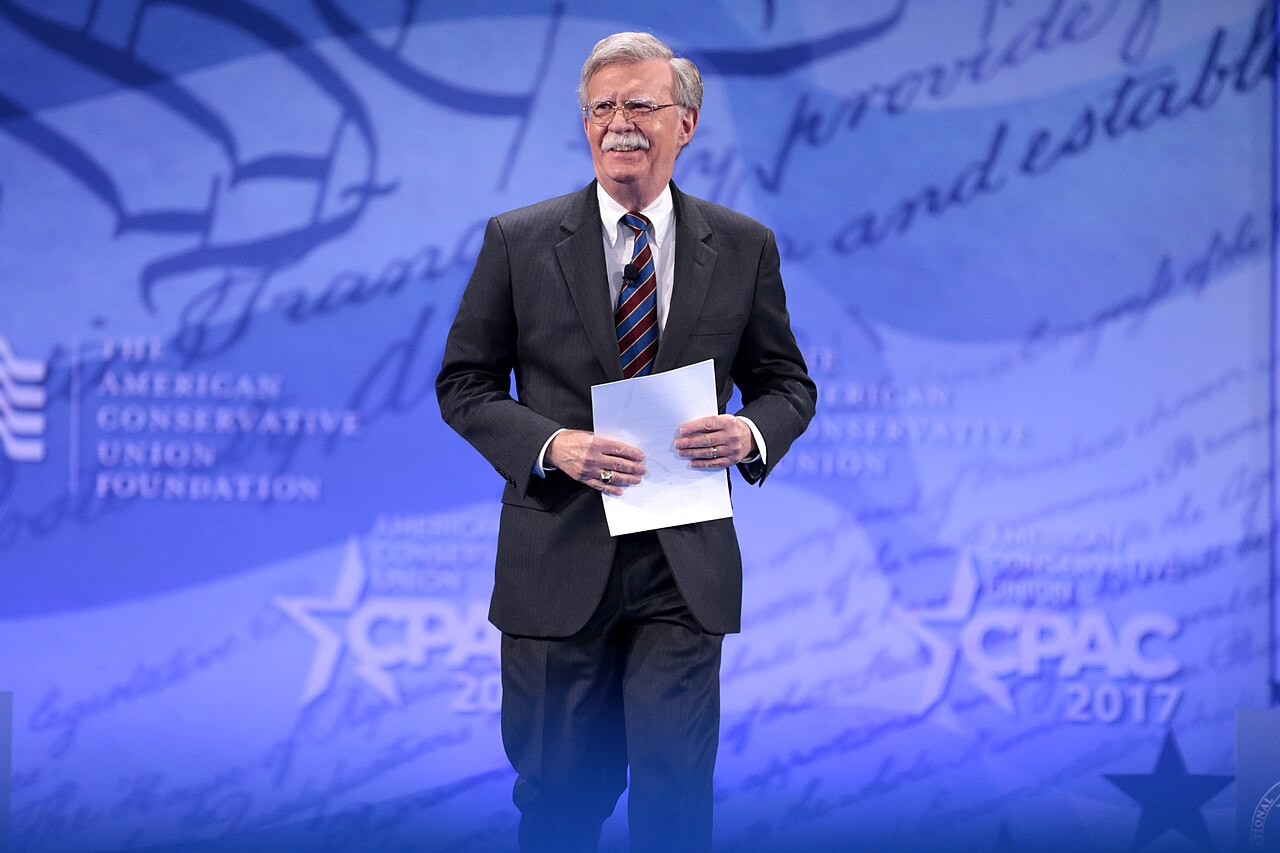A grand vision: Why the white house ballroom costs $200 million

An architectural rendering of the new State Dining Room that President Trump has commissioned. Picture: The White House
In a bold architectural move, President Donald Trump has unveiled plans for a new White House State Ballroom, a colossal, privately funded addition costing approximately $200 million. Expected to begin construction in September 2025 and completed before the end of his current term in January 2029, this ambitious project aims to solve long‑standing event space limitations at the Executive Mansion.
The Expensive Logic: Size, Capacity & Luxury
The proposed venue spans roughly 90,000 square feet and accommodates up to 650 seated guests, dwarfing the existing 200‑seat East Room. Constructed to top architectural standards, complete with classic columns, crystal chandeliers, and historically inspired facades, the ballroom demands high expenditures for premium materials and structural expansion.
Though large and lavish, the new ballroom will respect the mansion’s classic aesthetic. The theme and architectural heritage will be “almost identical” to the main building, reflecting careful craftsmanship to match centuries‑old design.
Funding the High Price Tag: Private Donors, No Taxpayer Money
White House officials emphasize that no federal funds will be used, Trump and “patriot donors” will cover the entire $200 million cost. The press secretary confirmed the project’s privately funded status during the July 31 briefing.
Trump frames the ballroom as a lasting legacy for future administrations and American diplomacy. The scale and private financing underscore his commercial-style approach to Executive Mansion upgrades.
Solving a Long-Standing Problem: Replacing Tents and Overcrowded Spaces
Presidents have historically relied on the East Room or erected temporary tents on the South Lawn to host dignitaries, often inconvenient, limited in capacity, and weather‑dependent. Trump described those tents as “a disaster” when it rains.
This new space will provide a reliable indoor venue for state dinners and ceremonies, significantly enhancing the White House’s hosting capacity with elegance and permanence.
Project Details: Timeline, Teams & Temporary Displacement
The project, managed by McCrery Architects, constructed by Clark Construction, and engineered by AECOM, will break ground in September 2025. Planning involved coordination with the National Park Service and U.S. Secret Service.
The ballroom will occupy the existing East Wing, built in 1902 and modified over decades. Offices, including those of the First Lady, must be temporarily relocated. Importantly, no original structures will be demolished; the integrity of the historic footprint is maintained.
READ ALSO
What is the Presidential Fitness Test? Inside Trump’s new executive order
Full list of new US tariff rates under Trump administration
Past Proposals & Renovation Precedents
Trump first floated the idea of building a White House ballroom in 2010, offering $100 million, an offer reportedly declined by the Obama administration. This new announcement echoes that earlier proposal, now significantly expanded.
The White House has seen hundreds of millions spent on refurbishing historic rooms like the State Dining Room. For example, in 1998, the Clintons used the White House Endowment Trust to fund a major renovation costing several hundred thousand dollars. But none approached the scale or price of the current ballroom plan.
Public Reaction & Political Implications
Critics warn of extravagant personal styling overshadowing governance, while supporters praise a generous private‑funded expansion that enhances historic function.
Some see the project as a statement piece, symptomatic of Trump’s penchant for grand design. Others view it as a strategic enhancement of America’s diplomatic hospitality capacity.
Why Is the Ballroom So Expensive?
In summary, the $200 million cost reflects large scale, luxurious design, structural expansion, and historic preservation, all funded privately. It addresses White House limitations once and for all, reinventing how the Executive Mansion hosts the world, within a bold, Trump‑styled legacy project.




